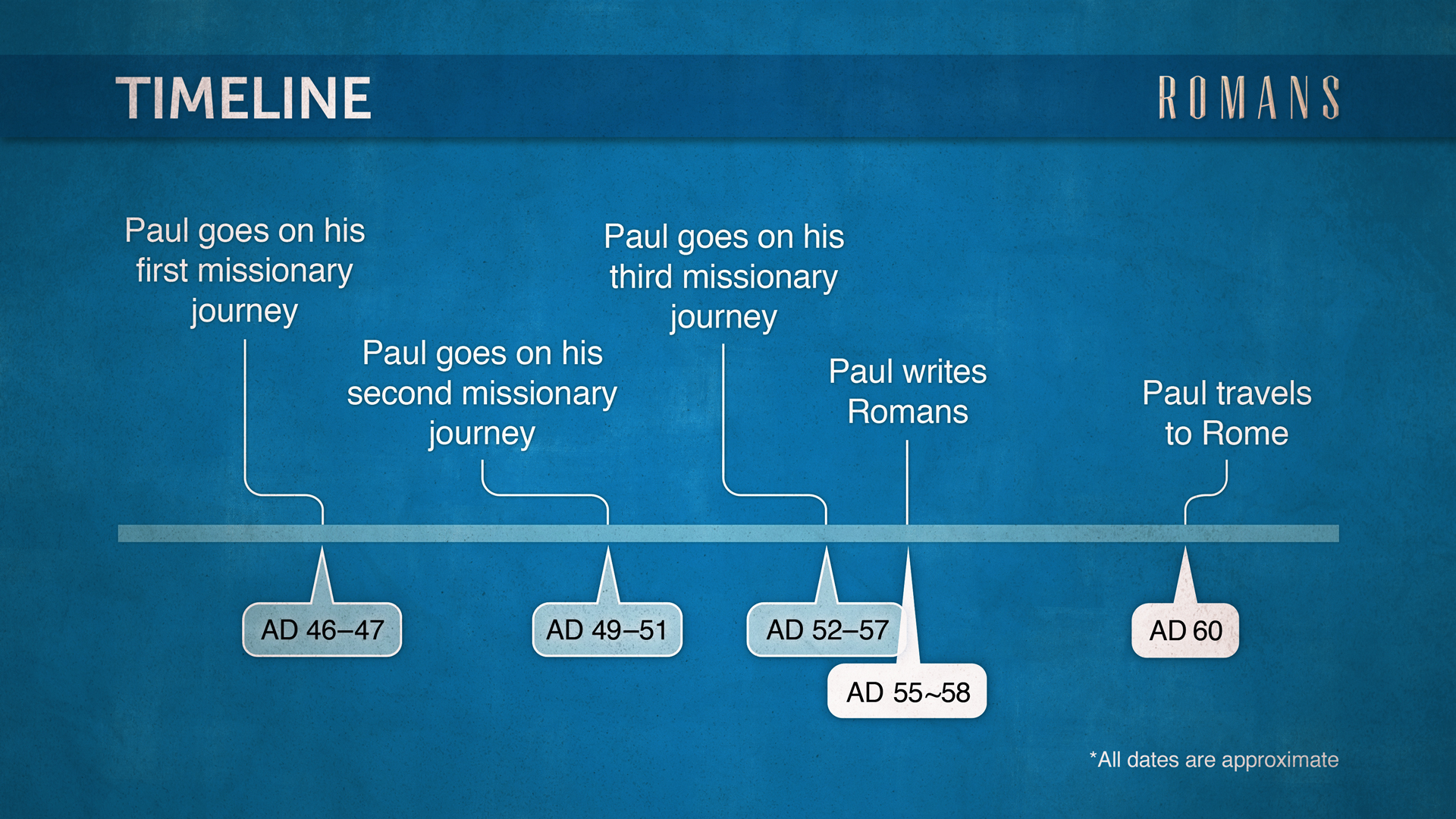The Book of Romans
Study and Master Paul’s Majestic Letter
A Call to Righteousness
In his letter to the Roman church, Paul lays out his argument for unifying Jews and non-Jews in Christ—and in the process, instructs his readers on how to restore their relationship with God. As Paul explains, we only find unity with God and with one another through God’s Son, Jesus. Christ represents the fulfillment of God’s covenant promises, going all the way back to Abraham. Paul proclaims Christ is the very righteousness of God and the means for sinners to become righteous—to be saved.
John D. Barry et al., Faithlife Study Bible (Bellingham, WA: Lexham Press, 2012, 2016).
Encounter Romans on its own terms
Romans
A Structural, Thematic, and Exegetical Commentary
Aaron Sherwood’s Romans commentary keeps Paul’s argument central. Sherwood traces the flow and rhetoric of Paul’s reasoning throughout. As readers reencounter the letter, detailed structural diagrams ensure the forest is never lost for the trees. Guided by Sherwood’s careful attentiveness, readers will be rewarded with illuminating and sometimes surprising insights.
Learn moreConnect Romans to the Grand Redemptive Story of the Bible
Romans
Evangelical Biblical Theology Commentary
Romans declares that God’s promises are fulfilled in Jesus. David G. Peterson situates Romans within the grand redemptive story of the Old Testament: creation, fall, Israel, exile, and promised redemption in the Messiah. Peterson reads Romans as Paul’s exposition and defense of the gospel and highlights its unique theological insights into the Trinity, righteousness and justification, Israel and the church, apostolic ministry, and true worship and holy living.
Learn moreExplore Romans’ Teachings on Righteousness, Salvation, and More
Romans Bundle
Get all the resources you need to study and master the Apostle Paul’s Epistle to the Romans. Explore the text and discover new insights with rich commentaries and in-depth studies.
Learn moreThe Historical Background of the Book of Romans

The book of Romans dates to the end of Paul’s third missionary journey; he most likely wrote this letter from the Greek city of Corinth in the mid-50s AD (Acts 19:21; 20:3). Gaius, whom Paul mentions is his host (Rom 16:23), is likely the same Gaius mentioned as a resident of Corinth in another of Paul’s letters (1 Cor 1:14).
Paul had not met the Christians at Rome (Rom 1:13), but the circumstances he mentions in the letter provide clues about his reasons for writing. Paul wanted to take the gospel to Spain, and he thought that Rome might make a good launching point for a westward mission (15:22–24), much like Antioch had been his home base in the East. In addition, Paul deeply desired to promote unity between Jewish believers in Jesus and those who were not Jewish (called “gentiles” or “Greeks”; see, for example, 1:16). The Roman church probably was a mix of Jews and gentiles. Paul wanted to communicate to these Christians that the gospel includes everyone.
John D. Barry et al., Faithlife Study Bible (Bellingham, WA: Lexham Press, 2012, 2016).
Key Themes in the Book of Romans
The major themes of Romans—righteousness and salvation—ring forth most clearly in Romans 1:16–17, Paul’s declaration of the power of the gospel. Here, Paul declares the good news of Jesus opens God’s salvation to Jews and gentiles alike. Further, this salvation fulfills the Old Testament promises God made to the people of Israel—showing God’s faithfulness to his covenant. Paul shows us that in Jesus we clearly see God’s power to save all who believe. In Christ, our righteous God unites Jews and gentiles alike into one people of God. All cultures, races, and people can come to God for salvation. Christ’s righteousness is enough for any and all of us to be saved.
Paul explains that all have all sinned and face the consequence of death (3:23; 5:12; 6:23). But God has provided the salvation we need through the death and resurrection of his Son (6:5–11; 8:1–4), and nothing can separate us from his love (8:38–39). Despite our wrongdoings against God and other people, Jesus saves each of us who believe. While our sin previously stood in the way, Jesus makes a way for us to have a relationship with God again and be unified in his name. We are empowered to collectively and boldly proclaim—and live—the good news of Jesus.
John D. Barry et al., Faithlife Study Bible (Bellingham, WA: Lexham Press, 2012, 2016).
The Outline and Structure of the Book of Romans

Romans is structured as an ancient letter, with an opening (1:1–17), a body (1:18–15:13), and a closing (15:14–16:27). The two main parts of the letter’s body include a section focusing on what God has done in Christ (1:18–11:36) and a section instructing Christians how to live in light of the truths set forth in the first part (12:1–15:13).
In the first section, Paul’s discussion focuses on four major points. First, everyone—including Jews and gentiles—is under God’s judgment (1:18–3:20). Second, Christ has become the living revelation of God’s righteousness so that everyone who believes—both Jews and gentiles—can be made right and brought into God’s family (3:21–5:21). Third, God’s righteousness gives us hope in our battle against sin (6:1–8:39). Finally, despite many Jews’ rejection of Christ, the people of Israel nevertheless have a role to play in God’s redemption of the world (9:1–11:36).
In the section on Christian ethics, Paul aims to help the Roman believers put their faith into practice, particularly when it comes to living together as the diverse yet unified Church (12:1–15:13). For Paul, Christians ought to have their entire lives—in terms of both belief and action—centered first and foremost on Christ. The good news of Jesus’ saving act is meant to be transformative, and this good news should be unapologetically proclaimed.
John D. Barry et al., Faithlife Study Bible (Bellingham, WA: Lexham Press, 2012, 2016).